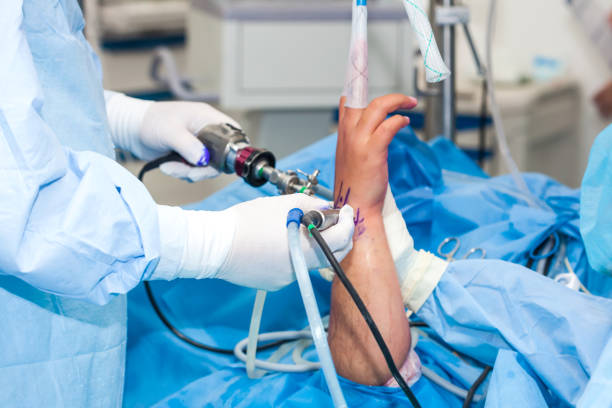
Wrist arthroscopy is surgery that uses a tiny camera and surgical tools to examine or repair the tissues inside or around your wrist. The camera is called an arthroscope. The procedure allows the doctor to detect problems and make repairs to the wrist without making larger cuts in the skin and tissue. This means that you may have less pain and recover more quickly than open surgery.
You will likely receive general anesthesia before this surgery. This means you will be asleep and unable to feel pain. Or, you will have regional anesthesia. Your arm and wrist area will be numbed so that you do not feel any pain. If you receive regional anesthesia, you will also be given medicine to make you very sleepy during the operation.
At the end of the surgery, the incisions will be closed with stitches and covered with a dressing (bandage). Most surgeons take pictures from the video monitor during the procedure to show you what they found and what repairs they made.
Your surgeon may need to do open surgery if there is a lot of damage. Open surgery means you will have a large incision so that the surgeon can get directly to your bones and tissues.